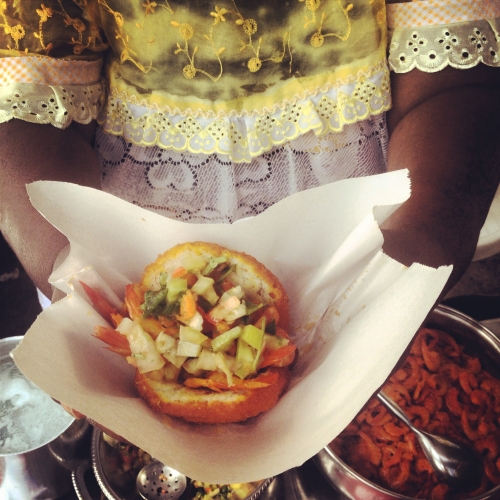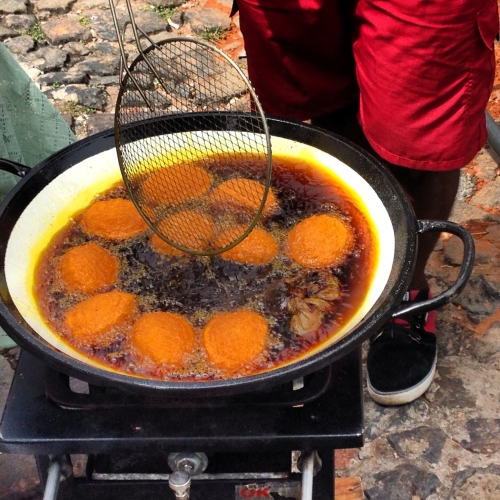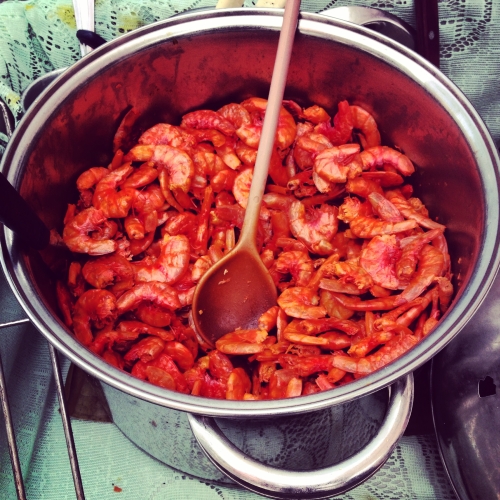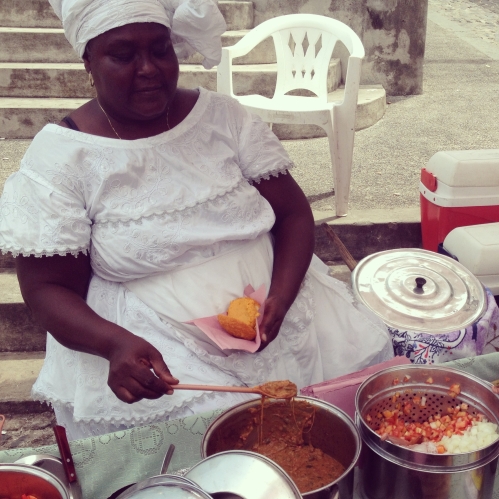During Carnaval, in the town of Salvador in Bahia Brazil, people literally dance in the streets. The city is filled with the sounds of Brazilian pop music and Afro-Brazilian rhythms–Diana Mercury, Lepo Lepo, Olodun, mixed in with a little Michael Jackson and Daft Punk. At makeshift stands, Bahians grill skewered meat, toast cheese sticks, and slather corn on the cob with butter. Street food is how you feed your people during a festival that runs for 5 days (and nights!) and attracts over 2 million revelers.
All over the city, ladies wearing white dreses and head wraps (aka Baianas) sell acarajé (Portuguese pronunciation: (![]() listen)), a fritter made from black-eyed peas deep and fried in palm oil often split and stuffed with shrimp, chopped tomatoes, stewed okra and super-spicey hot sauce. The dish originated in West African, brought to to Brazil during the slave trade. The name comes from the Yoruba language âcara (ball of fire) and je (to eat), hence to eat a ball of fire.
listen)), a fritter made from black-eyed peas deep and fried in palm oil often split and stuffed with shrimp, chopped tomatoes, stewed okra and super-spicey hot sauce. The dish originated in West African, brought to to Brazil during the slave trade. The name comes from the Yoruba language âcara (ball of fire) and je (to eat), hence to eat a ball of fire.
Acaraje is a sacred food, one of the traditions of Candomblé, an Afro-Brazilian religion. While the religion is far too complex to describe here,* there is one powerful God Oludumaré who is served by less powerful deities called orishas, each embodying different natural forces and human characteristics. Candomble is largely an oral tradition and practiced in secret, so the descriptions and names for the orishas vary (and can be confusing) but according to one source acarje is the ritual food of lansa, “the orisha of the winds, hurricanes and tempests who lives at the gate of the graveyard, and has dominion over the realm of the Dead.” In another ritual, the first cake is offered to Èṣù “the spirit of chaos and trickery who leads mortals to temptation and possible tribulation in the hopes that the experience will ultimately lead to their maturation.”




